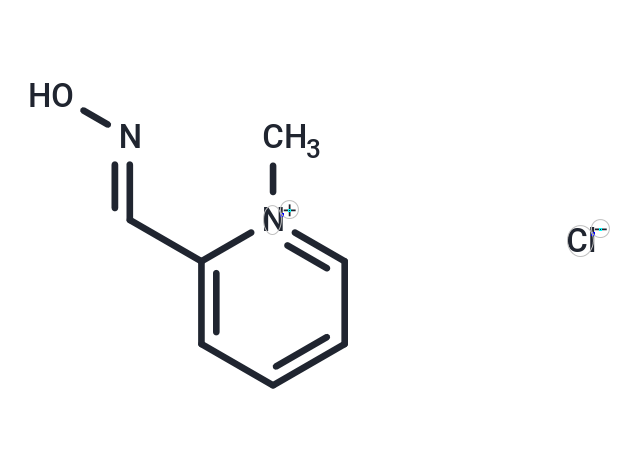Shopping Cart
- Remove All
 Your shopping cart is currently empty
Your shopping cart is currently empty

Pralidoxime Chloride (2-PAM chloride) is a useful agent in the treatment of organophosphate poisoning. Pralidoxime binds to organophosphate-inactivated acetylcholinesterase, used to combat poisoning by organophosphates or acetylcholinesterase inhibitors (nerve agents).

| Pack Size | Price | Availability | Quantity |
|---|---|---|---|
| 100 mg | $30 | In Stock | |
| 500 mg | $65 | In Stock | |
| 1 g | $95 | In Stock |
| Description | Pralidoxime Chloride (2-PAM chloride) is a useful agent in the treatment of organophosphate poisoning. Pralidoxime binds to organophosphate-inactivated acetylcholinesterase, used to combat poisoning by organophosphates or acetylcholinesterase inhibitors (nerve agents). |
| In vitro | The application of pralidoxime allowed the regeneration of an important fraction of inhibited AChE, process which is concentration-dependent[1]. |
| Alias | 2-Pyridinealdoxime methochloride, 2-PAM chloride, 2-PAM (chloride) |
| Molecular Weight | 172.61 |
| Formula | C7H9ClN2O |
| Cas No. | 51-15-0 |
| Smiles | C[n+]1ccccc1/C=N/O.[Cl-] |
| Relative Density. | 1.3265 g/cm3 (Estimated) |
| Storage | Powder: -20°C for 3 years | In solvent: -80°C for 1 year | Shipping with blue ice. | |||||||||||||||||||||||||||||||||||
| Solubility Information | DMSO: 50 mg/mL (289.67 mM), Sonication and heating are recommended. | |||||||||||||||||||||||||||||||||||
Solution Preparation Table | ||||||||||||||||||||||||||||||||||||
DMSO
| ||||||||||||||||||||||||||||||||||||

Copyright © 2015-2025 TargetMol Chemicals Inc. All Rights Reserved.